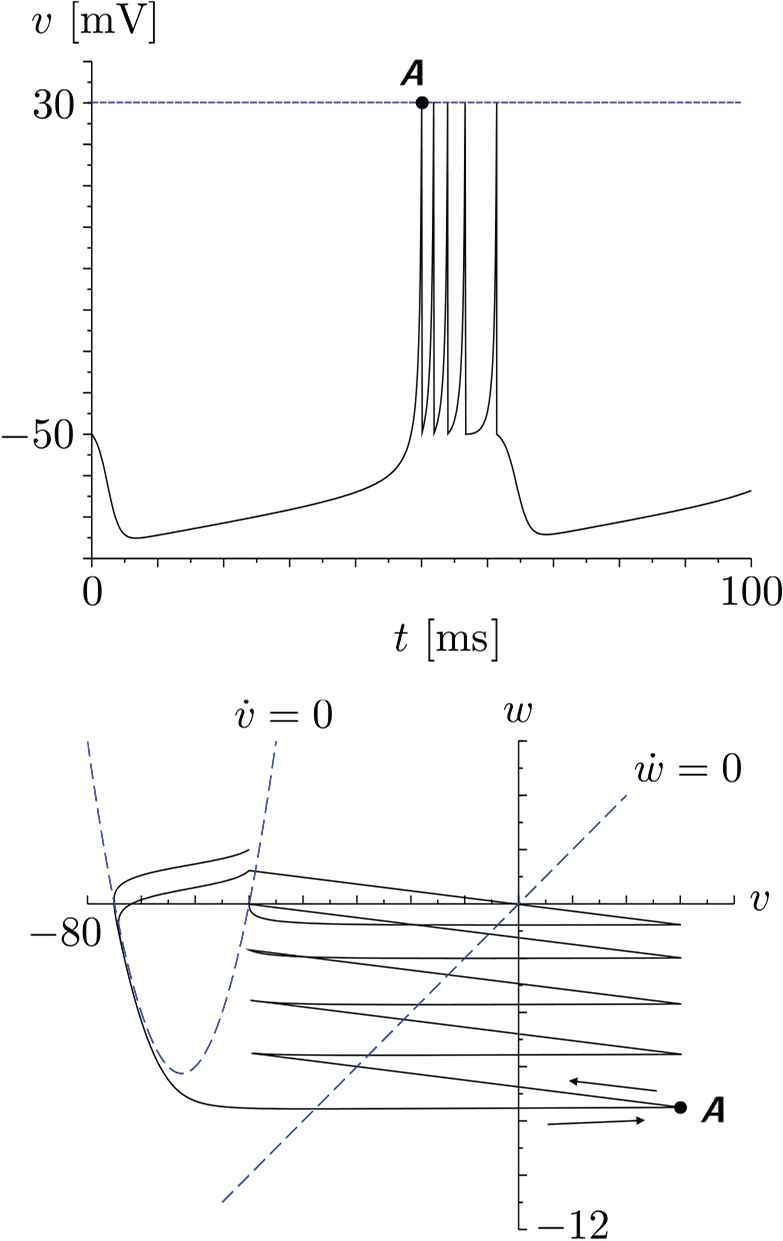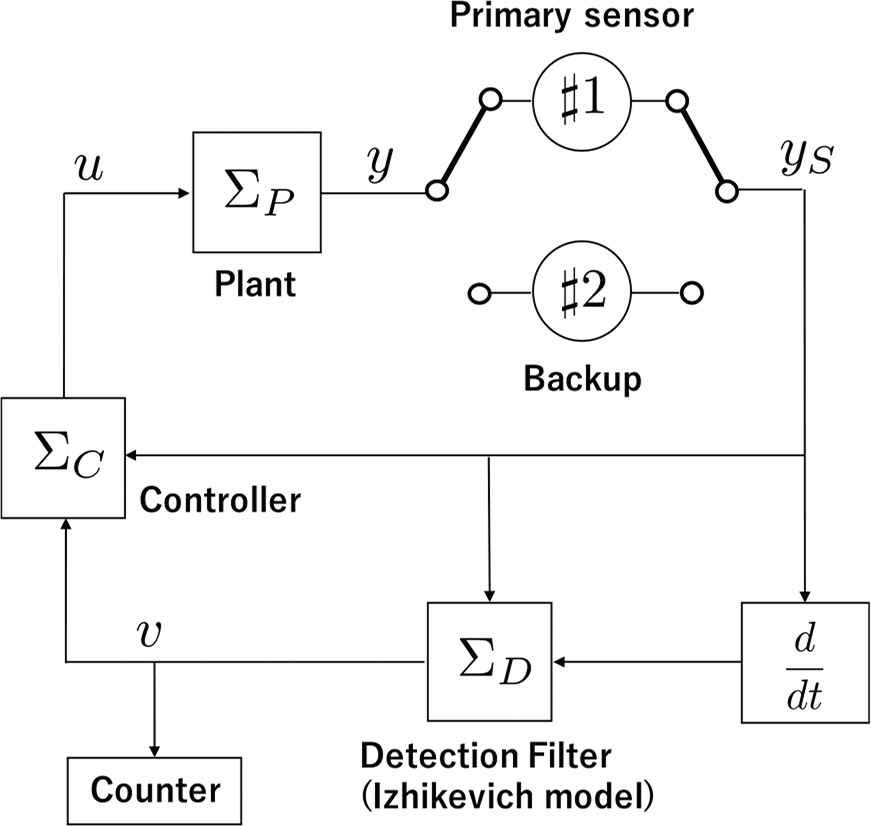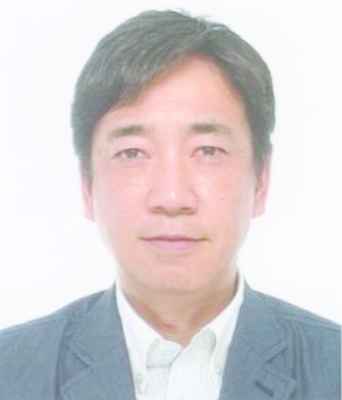Izhikevich Model-based Self-repairing Control for Plants with Sensor Failures and Disturbances
- DOI
- 10.2991/jrnal.k.190828.007How to use a DOI?
- Keywords
- Self-repairing control; sensor failure; fault detection; dynamic redundancy; spiking neuron model
- Abstract
In the previous works, several types of the Self-Repairing Control Systems (SRCS) have been developed against unknown sensor failures. The SRCS can automatically detect failures, and replace failed sensors with healthy backups so as to maintain the system stability. This paper presents a new SRCS, whose detection filter is constructed based on the spiking neuron model proposed by Izhikevich. Just counting up the number of spikes in the filtered signal makes it possible to find the sensor failure promptly. Also, in this paper, the robustness with respect to disturbances is theoretically analyzed, and it is shown that SRC can be accomplished in the presence of unknown disturbances.
- Copyright
- © 2019 The Authors. Published by Atlantis Press SARL.
- Open Access
- This is an open access article distributed under the CC BY-NC 4.0 license (http://creativecommons.org/licenses/by-nc/4.0/).
1. INTRODUCTION
Stabilities of feedback control systems are guaranteed under the assumption that the feedback loops are healthy. Obviously, if just one loop has a failed sensor, then the control system would lose its stability. Hence, detection for sensor failures plays an important role in maintaining the control system. In the previous works, several types of the Self-Repairing Control Systems (SRCS) have been developed against unknown sensor failures [1,2]. The SRCS can automatically detect failures, and replace failed sensors with healthy backups so as to maintain the system stability. Compared with existing active fault tolerant controls, the SRCS has the following advantages: (1) the detection filter has a simple structure that does not depend on the mathematical model of the plant, and (2) the maximum time for detection can be specified arbitrarily in advance, i.e., early fault detection can be attained. However, because unstable detection filters have been used [1], the conventional SRCS have been contrary to the concept of the strong stability, which claims that control systems should be constructed by stable elements [3].
In this paper, for the SRCS against sensor failures, a new design method for the detection filter is presented based on the simple spiking neuron model by Izhikevich [4], and also a concrete failure detection by counting the number of spikes in the filtered signal is shown. This method satisfies strong stability concept, because the filtered signal is always bounded. Furthermore, this paper shows the high-gain feedback controller stabilizing both the plant and the detection filter. It is shown that the overall control system has high robustness with respect to disturbances.
Throughout this paper, with x ∈ ℝ, we define the ‘sgn’ function by
2. SPIKING NEURON MODEL
The spiking neuron model proposed by Izhikevich [4] is represented as [Equations (1) and (2)]:
Figure 1 shows the well-known ‘bursting’ pattern with the parameters ε = 0.02, γ = 0.2, vR = −50, wR = 2, the initial values v(0) = −50, w(0) = 2 and the stimulus I = 10 [mV]. In both figures, ‘A’ indicates the first point where the auxiliary resetting (2) is performed.

A ‘bursting’ pattern by Izhikevich spiking neuron model: the time history (top) and the trajectory (v, w) of the v – w plane (bottom).
Clearly, it is shown that each spike is shaped by the auxiliary resetting. This will be used for the fault detection of the proposed SRCS.
3. PROBLEM STATEMENT
Consider the following linear time invariant system with unknown disturbances.
For measurement of the output y, two sensors are prepared. One is the primary sensor #1, and the other is the backup #2 for occasion of failure. Then, the feedback signal ys: ℝ+ → ℝ can be expressed as follows [Equation (4)].
The failure scenario to be considered here, is expressed as follows [Equation (5)]:
The aim of this paper is to design the SRCS, which can replace the failed sensor with the backup to maintain the control stability and guarantee the convergence property of y:
4. CONTROL SYSTEM DESIGN
First of all, the detection filter is introduced based on the spiking neuron model expressed by (7) and (8).
Comparing the detection filter with the Izhikevich model, we can find that the part of the output feedback, ẏs + pys in (7) corresponds to the stimulus I in (1). Furthermore, because ys takes negative values, the sign function sgn[ys] is introduced.
Next, the high-gain feedback controller is designed by
The overall control system is illustrated in Figure 2.

The block diagram of the proposed SRCS with the Izhikevich spiking neuron model.
Here, consider the case when the sensor is healthy, i.e., ys = y. From (3), (7), and (9), the behavior of the overall control system without the auxiliary resetting (8) obeys
Taking the time derivative of S gives [Equation (12)]
With the same analysis, it can be verified that the filtered signal v also remains in a small region of radius λ, i.e.,
5. FAULT DETECTION
This section shows the concrete detection method using the detection filter given by (7) and (8).
Consider the case when the failure occurs. Then, the detection filter is represented as [Equation (17)]
Because the occurrence time of the bursting can be arbitrarily shortened by selecting the parameters for the detection filter, the detection time can be hastened.
After replacing the failed sensor, the boundedness of all the signals in the control system are guaranteed again, and the convergence (6) can be obtained.
6. NUMERICAL EXAMPLES
To confirm the effectiveness of the proposed method, the numerical simulation is explored.
Consider the following plant with disturbances.
In this example, the radius λ of the small region (6) to which the output y converges, is given by λ = 0.01.
The failure scenario (5) is supposed that
To stabilize the plant and the detection filter mentioned above, by trial and error, the controller parameter is chosen as
The simulation results are shown in Figure 3. In this figure, the measured output yS, the actual output y (top) and the filtered signal v (bottom) are shown. From this result, it is clear that the control system can be well stabilized in spite of the existence of the disturbances, and the actual output y converges to a very small ball before and after the failure. The SRC can be accomplished, and the failed sensor is replaced at tD ≅ 26 [s], i.e., early fault detection can be achieved by using the spiking neuron model.

Simulation results: the measured output and the actual output (top) and the filtered signal (bottom).
7. CONCLUSION
In this paper, the new SRCS has been developed that has the detection filter based on the spiking neuron model by Izhikevich. In this method, the sensor failure can be detected by counting the spikes in the filtered signal. The applications to nonlinear systems with noise, multiple-input and multiple output (MIMO) systems and so on are still left in the future works.
CONFLICTS OF INTEREST
The authors declare they have no conflicts of interest.
ACKNOWLEDGMENT
This work is supported by
Author Introduction
Dr. Masanori Takahashi
 He received his B. Eng., M. Eng. and D. Eng. degrees from Kumamoto University, Japan in 1992, 1994 and 1998 respectively. He is currently a Professor with the Department of Electrical Engineering and Computer Science, Tokai University, Japan. His research interests are in the area of fault tolerant control, fault detection and adaptive control
He received his B. Eng., M. Eng. and D. Eng. degrees from Kumamoto University, Japan in 1992, 1994 and 1998 respectively. He is currently a Professor with the Department of Electrical Engineering and Computer Science, Tokai University, Japan. His research interests are in the area of fault tolerant control, fault detection and adaptive control
REFERENCES
Cite this article
TY - JOUR AU - Masanori Takahashi PY - 2019 DA - 2019/09/11 TI - Izhikevich Model-based Self-repairing Control for Plants with Sensor Failures and Disturbances JO - Journal of Robotics, Networking and Artificial Life SP - 105 EP - 108 VL - 6 IS - 2 SN - 2352-6386 UR - https://doi.org/10.2991/jrnal.k.190828.007 DO - 10.2991/jrnal.k.190828.007 ID - Takahashi2019 ER -
